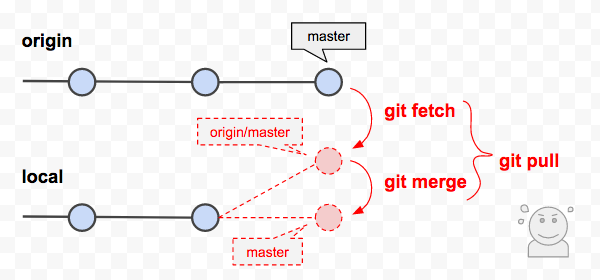
- #Merge updated branch to master git Patch#
- #Merge updated branch to master git code#
- #Merge updated branch to master git series#
#Merge updated branch to master git code#
This translates to Git intuitively selecting an appropriate merging algorithm and the common ancestor between the two branches you intend to combine, then creating a single commit that joins them both together, incorporating new code in the process. Once you have completed a merge operation, your codebase will reflect whatever changes you’ve pulled into it, allowing others to use them or otherwise take them into account for additional development or deployment processes.
#Merge updated branch to master git series#
A series of commands are used to select the appropriate branch to merge code changes into, identify the right branch to pull these changes from and delete the branch that’s no longer required for testing, and develop the newly incorporated changes. When you merge with Git, your code's history is consolidated into a single, sequential timeline ending in its latest version. Read on to learn how best to manage your own merges. A slew of poorly executed merges can make changes to your codebase difficult to understand and identify, slowing down production as they pile up. Linus Torvalds, the man responsible for creating Git, has even complained about badly constructed merges, such as those GitHub often generates and the trouble they cause for active development. At the very least, improper merging techniques can create headaches for fellow coders later on, confusing the history of your codebase and defeating the general purpose of using Git in the first place. However, completing a seemingly simple merge can quickly become a chore if issues arise. Git is a powerhouse for pushing code improvements and modifications from a local work environment to a remote production server or public repository.

Here we have changed something on line 74 and need to redo the whole file again.Merging is at the core of the version control system Git's feature set.

#Merge updated branch to master git Patch#
If you disrupt the formatting of a file you will get an error in the following format error: corrupt patch at line 74 Your edited hunk does not apply. It is worth noting that any edits to the file should be done after the merge and not within the hunks themselves. removed line removed line (being kept) Accidental Changes If we do not wish to have a line of code removed, we need to replace the - sign with a whitespace character ' '. + added change #+ ignored add change Skipping a Code Retraction

Anything prefixed with a # will not be merged into the file. If the updated file contains a line of code we do not wish to merge, we need to prefix the + sign with a # comment character. If we want to keep the code that is being added, and/or removed we do not need to do anything but save the file. The + and - signs denote that we wish to remove the line STATUS = idle and add the line STATUS = engaged to our text file. Here the local file has its status set as ‘idle’ when the updated version has it as ‘engaged’. For example, our files may have had the following change: # this file only contains a staus - STATUS = idle + STATUS = engaged Here we get the same segment of code displayed, but with an option to edit sections of it. By default, the editor that will be opened is vim.


 0 kommentar(er)
0 kommentar(er)
